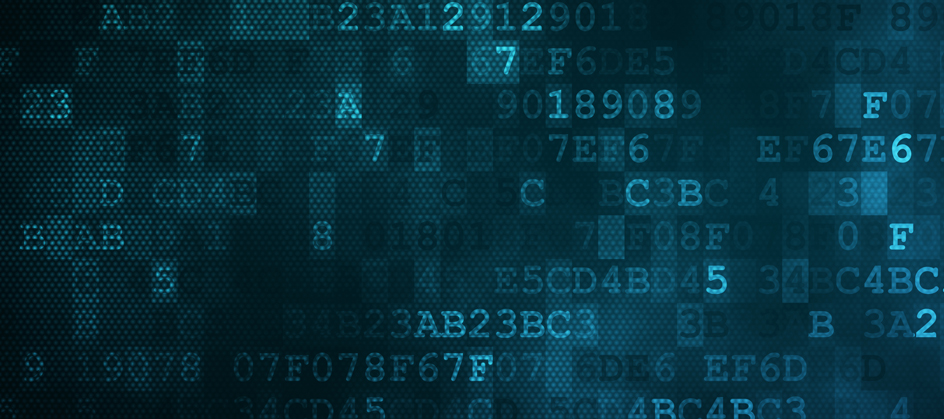People keep asking me why I am so excited about the Blockchain, and why I see it as an enabler for the mainframe. I am obviously a fan of the mainframe, and I see a lot of activity in a number of verticals that are creating a really neat rebirth where the mainframe is concerned (beyond where it has existed for many years). Retail is wrestling with Omnichannel, Healthcare is wrestling with personalized health records and of course Finance is wrestling with Blockchain.
On the one hand, I love that these technologies are in place and that they stand a chance of benefiting the mainframe, especially since a lot of companies out there are not really talking about new application development on the mainframe. However, companies that run mainframe systems are certainly talking about how to best get the value out of them, and the impact that new technologies or competitive services will have on mainframe requirements.
Why? The simple fact is that transactions are growing in complexity. Of course, it’s never quite that simple, since at the same time, costs need to come down. So how do you handle these seemingly disparate requirements? The best way to handle growth in complexity while keeping the cost down, is to keep the system of record as close to the computation as possible. In many large scale cases, the answer lies in the mainframe.
So what exactly is Blockchain all about? It’s a shared single version of the truth of anything digital. It’s essentially a database technology – a distributed ledger that maintains an ever-growing list of data records which are decentralized and practically impossible to tamper with. The data records, which can be any transaction – such as bitcoin or smart contract, or anything that defines the value of goods or services – are combined into a bunch of blocks. In order to add these blocks to a ledger, 51% of all computers in the network that have access to the Blockchain need to validate the blocks. This validation is done via cryptography, which means that a very complex mathematical equation has to be solved. Once a block has been validated, it receives a timestamp and is put into the chain. If one part of the chain changes, then all blocks within the chain must change. Such a change again needs to be validated by at least 51% of all the nodes in the network.
Now, imagine solving that for multiple Blockchains, for multiple blocks, across multiple transactions at a high volume. You can quickly see how the computational and processing requirements are SIGNIFICANT.
Compare a Blockchain to a crossword puzzle. A crossword puzzle can be hard to solve, but once solved, it is obvious that it is correct and solved. Now, add a twist: for every crossword puzzle that you solve, it contains one word from the previous puzzle that you solved. For example, imagine that today’s crossword puzzle instructs you to use 5-Down from the puzzle you solved last Wednesday. This would obviously make no sense unless you could access Wednesday’s puzzle.
That’s the uniqueness of Blockchain. There is no incentive to tamper with an existing Blockchain ledger – it’s simply too much effort. Thinking back to our crossword puzzle analogy, imagine trying to call up the New York Times and asking them to change last Wednesday’s crossword puzzle because you want a different word. Not easily done; frankly, it’s just not feasible. Now, add in the fact that the Blockchain keeps growing. Not only does tampering with a Blockchain ledger become increasingly difficult as it grows, but it becomes even more and more cost inefficient. What this means is that it is nearly impossible, and definitely impractical to tamper with data that has been recorded in a Blockchain.
The net effect of Blockchain then, is that peer-to-peer transactions suddenly become possible without a need for a centralized authority. Money transfers are one example. Today, if you want to send money to someone you would usually rely on a service from a bank or an alternative like Paypal. With Blockchain, you can manage this yourself in a peer-to-peer method without the need for something to be cleared. That will happen automatically.
Now, there are potential obstacles. If third parties are no longer necessary, and organizations and consumers can do peer-to-peer transactions, which are processed almost instantaneously – that is a paradigm shift. When disruption works to eliminate the middlemen, they tend to fight ferociously against it – regardless of the exciting potential opportunities that new implementations could offer.
Recent history is replete with disruptive changes in industry where the middle man has been eliminated or a new model has evolved. But this is also where the opportunity lies for forward-thinking individuals or companies. People will still need a way to access or validate something. Take cryptocurrencies for example. No longer will you need to rely on a fiat currency which is controlled by a government or the price of gold. It can be (and will need to be) defined. And it will need to be controlled. Of course, there are still a lot of questions around this like: “How do you use it?” or “How do you complete your cryptocurrency transaction?”
Taking this concept further, “How do you then exchange your cryptocurrency into a different type of currency that you can use to buy your next product or service?” and “How do you manage the systems of record required to allow that to happen?” I could go on, but I think you get the point. At the end of the day, there is still a need to complete transactions. Time will tell if I am seeing the future right, but I see that there will almost be the equivalent of a Blockchain “gateway” feeding into a “non-gateway” world, and that there will still be a requirement for time-sensitive, highly reliable, and highly scalable computing.
And this is where the mainframe comes into play and really starts to, yet again, prove its value. While I am a huge fan of what Blockchain will do for transactions, I also like to get paid. I refuse to accept even a 1% chance that I could deliver something and not get paid for my efforts. This is after all, precisely the value that allows middlemen to charge their fees. The economic model may still evolve, and the hype may not live up to reality, but, ultimately if you need a lot of reliable and scalable computing power for complex transactions, that is exactly why mainframes were created. It is also the reason why they have driven the revenue generating applications of many of the world’s biggest companies for decades.
To put it succinctly, the best enabler of true Blockchain transactions is going to be the mainframe.
Originally published in IBM Systems Magazine.








0 Comments